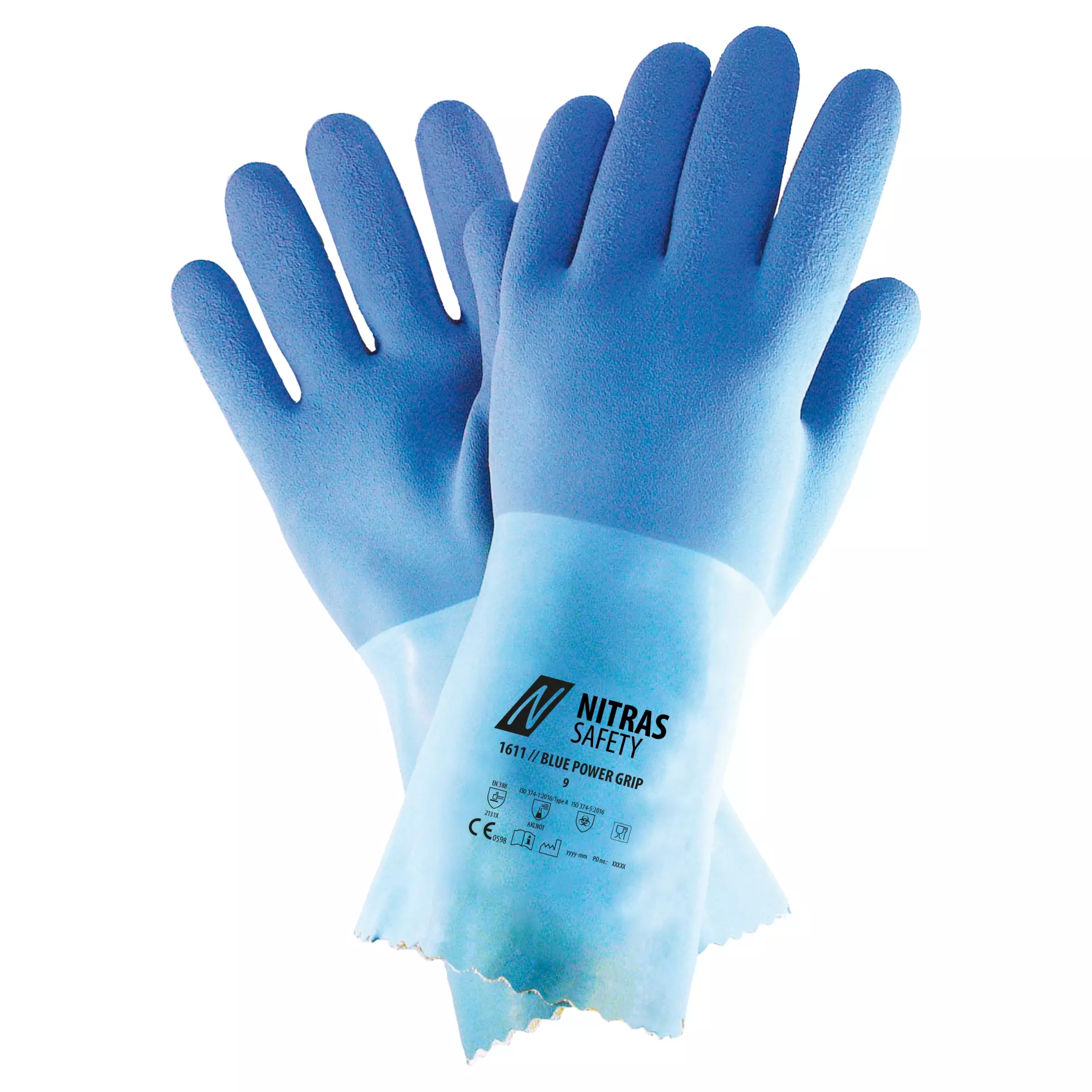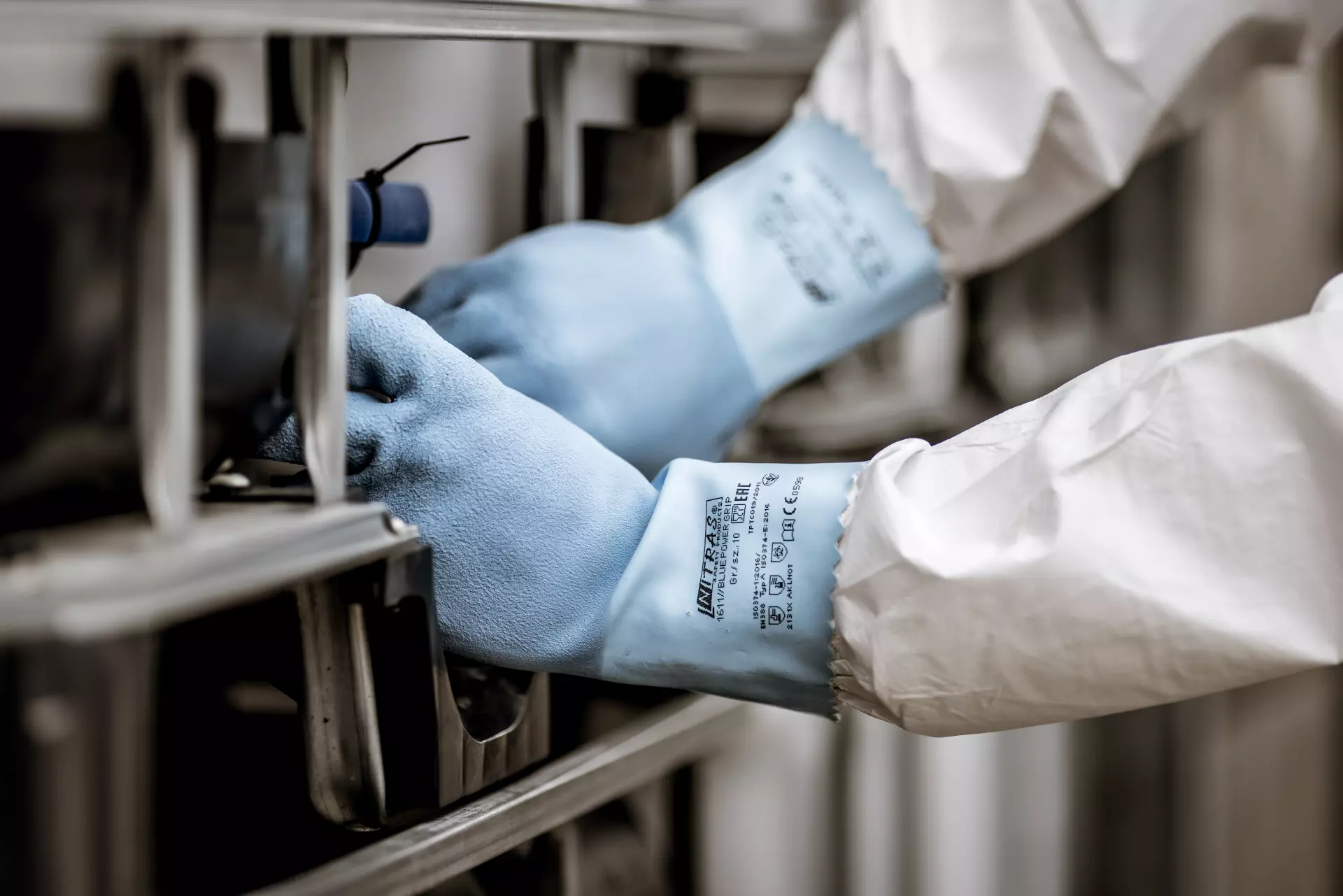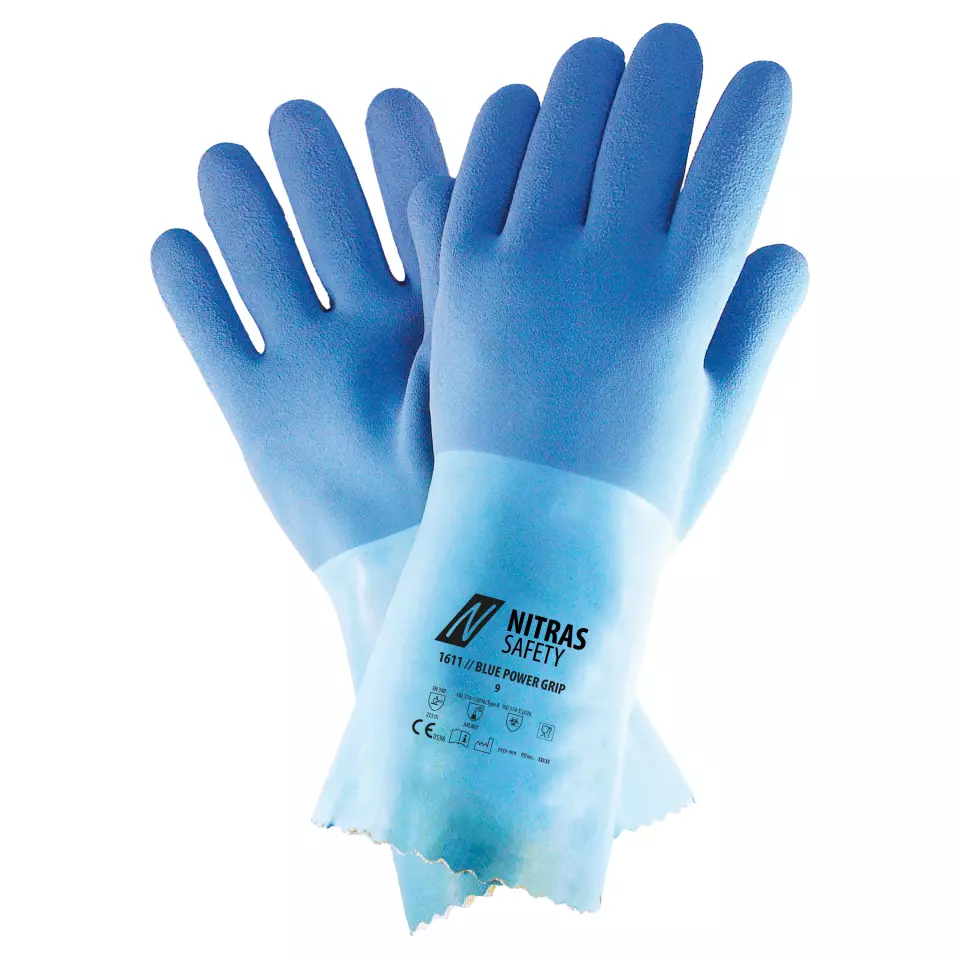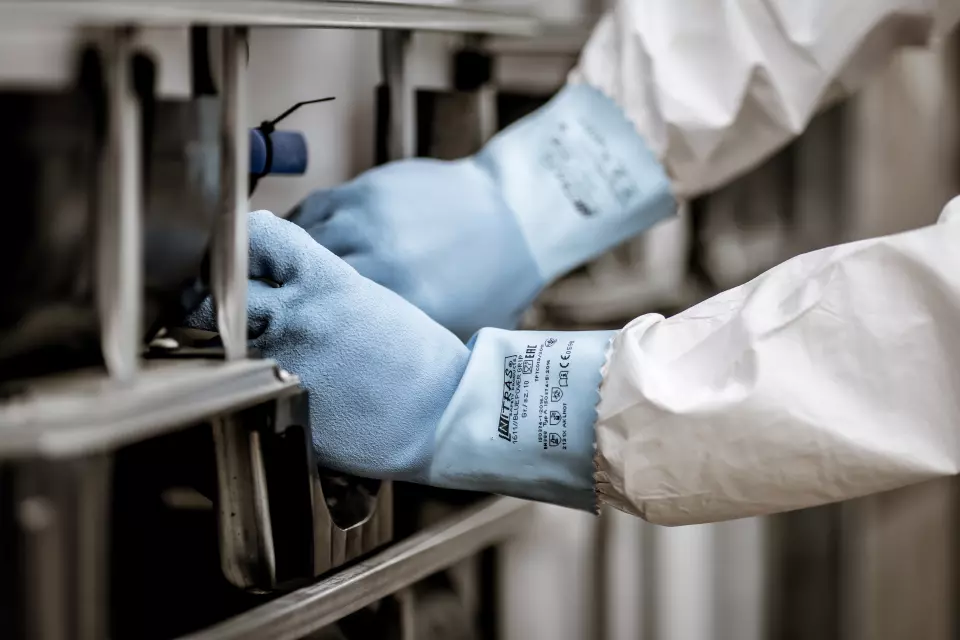

Features You'll Love

Palm Material · Cotton, Latex
Grip Finish · Textured
The surface texture or coating on the palm and fingers that determines how securely the gloves can grip tools, materials, and surfaces during work tasks.

Cuff Style · Open
Determines how the glove secures around the wrist, affecting fit, protection from debris, and ease of putting gloves on and taking them off.

EN 388 · Abrasion Resistance Level 2, Puncture Resistance Level 1
Withstands moderate rubbing and friction, offering good protection for tasks involving handling rough materials.
Provides basic protection against punctures from blunt objects like splinters, not sharp points like needles.
Nitras
BLUE POWER GRIP Chemical Protective Gloves, Blue, 12 pairs
BLUE POWER GRIP Chemical Protective Gloves, Blue, 12 pairs
5 / 5
58,36 €
Price per 12 pairs
4,86 € / pair
Choose size
Shipping fee is 7,95 € for orders under 80,00 €
Features You'll Love

Palm Material · Cotton, Latex
Grip Finish · Textured
The surface texture or coating on the palm and fingers that determines how securely the gloves can grip tools, materials, and surfaces during work tasks.

Cuff Style · Open
Determines how the glove secures around the wrist, affecting fit, protection from debris, and ease of putting gloves on and taking them off.

EN 388 · Abrasion Resistance Level 2, Puncture Resistance Level 1
Withstands moderate rubbing and friction, offering good protection for tasks involving handling rough materials.
Provides basic protection against punctures from blunt objects like splinters, not sharp points like needles.
Product description
Chemical protective gloves featuring a cotton interlock liner with latex coating for enhanced grip and protection. These 30 cm gloves combine a roughened surface with a soft, comfortable design, making them ideal for food handling applications. The 1.7 mm thick construction provides protection against micro-organisms and bacteria while maintaining excellent tactile sensitivity.
Product Features:
- Cotton interlock liner with latex coating
- Roughened surface for enhanced grip
- Protection against micro-organisms and bacteria
- Food contact approved
Technical Details:
- Length: 30 cm
- Thickness: 1.7 mm
- Soft, ergonomic design for extended wear